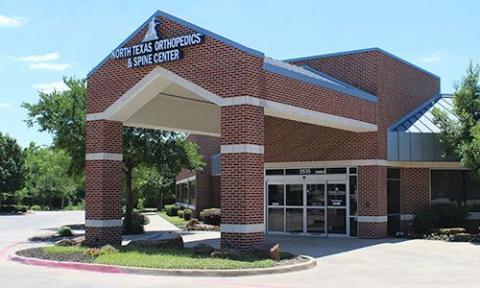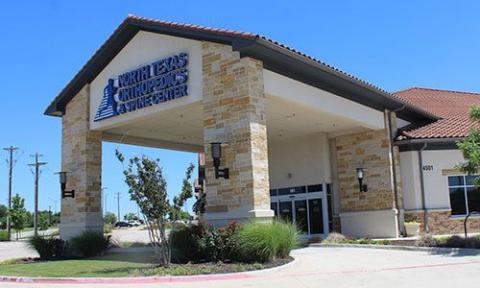Back pain is one of the most common health issues people face, affecting individuals of all ages and lifestyles. Dr. Michael Briseño, an expert in spine care at North Texas Orthopedics, shares valuable insights into the causes, prevention, and treatment of back pain.
Degenerative Conditions: Wear and Tear of the Spine
One of the most common causes of back pain that Dr. Briseño encounters is degenerative changes, such as osteoarthritis and degenerative disc disease. These conditions are typically age-related and result from the natural wear and tear of the spine over time. Even in our 20s, early signs of arthritis and disc degeneration can be present in imaging studies, though symptoms usually develop later in life. As Dr. Briseño explains, the joints in the spine can start to secrete inflammatory chemicals when they are overworked, leading to discomfort and pain. Fortunately, these conditions are treatable, and early intervention can help manage symptoms effectively.
Muscle Strains: The Often-Overlooked Cause
While patients often focus on the structure of their spine, such as discs and joints, Dr. Briseño emphasizes that muscle or ligament strains are a more frequent cause of back pain than many realize. These soft tissues surrounding the spine can become inflamed or stressed due to overactivity or unfamiliar movements. People engaging in strenuous activities they are not accustomed to, such as heavy lifting or sudden twists, are particularly prone to these injuries. To prevent muscle strains, Dr. Briseño recommends staying active, practicing good body mechanics, and avoiding activities that may put undue strain on the spine.
Herniated vs. Bulging Discs: Understanding the Difference
Many patients are unsure of the difference between a herniated disc and a bulging disc. While these terms are often used interchangeably, they refer to distinct conditions. A herniated disc occurs when the outer ring of the disc ruptures, causing disc material to press on nerve roots, which can result in pain that radiates down the leg. In contrast, a bulging disc is a more chronic condition where the disc gradually flattens out, similar to a deflating tire. Herniated discs are often treated with non-surgical methods like physical therapy, but surgery may be required in cases of nerve damage.
Spinal Stenosis: Narrowing of the Spinal Canal
Spinal stenosis occurs when the spinal canal narrows, putting pressure on the spinal cord and nerves. This condition is often caused by arthritis or degenerative disc disease and can lead to back pain, leg pain, and difficulty walking. People with spinal stenosis may experience symptoms that worsen over time, and Dr. Briseño stresses the importance of addressing these issues early. Treatment options include physical therapy, medications, and in severe cases, surgery.
Poor Posture and Ergonomics
In today’s technology-driven world, poor posture and improper ergonomics are increasingly common contributors to back pain. Dr. Briseño highlights the importance of maintaining good posture, particularly for those who sit for long periods. Sitting in one position for too long or hunching over devices can place unnecessary stress on the spine. To reduce the risk of back pain, Dr. Briseño advises patients to take regular breaks, use sit-to-stand desks, and be mindful of their posture throughout the day.
Injuries and Accidents
Traumatic injuries, such as fractures or sprains, are another major cause of back pain. These injuries trigger an inflammatory response in the body, leading to pain and discomfort. Early treatment, including physical therapy and anti-inflammatory measures, is crucial to restoring function and preventing long-term complications.
Lifestyle Factors: Obesity and Sedentary Behavior
Lifestyle choices can significantly impact spinal health. Dr. Briseño explains that obesity and sedentary behavior are key contributors to back pain. Excess weight places additional stress on the joints, while lack of movement deprives them of the natural nutrition they receive from joint fluid. To maintain healthy joints, it’s important to stay active and manage body weight. Smoking is another lifestyle factor that can negatively affect the musculoskeletal system, further increasing the risk of back pain.
The Importance of Early Intervention
Dr. Briseño emphasizes that early intervention is critical in preventing acute back pain from becoming chronic. By addressing pain early on, patients can avoid long-term disability and get back to their normal activities sooner. If left untreated, back pain can worsen over time, making it harder to manage.
Red Flags for Serious Conditions
While back pain is common, certain symptoms should prompt immediate medical attention. Dr. Briseño warns that severe pain, leg weakness, or inability to walk are red flags. Additionally, nighttime pain, fever, or chills can indicate a more serious underlying condition, such as an infection or tumor.
Back pain can be debilitating, but with proper care and early intervention, patients can find relief. For expert diagnosis and treatment, Dr. Michael Briseño and the team at North Texas Orthopedics are here to help you get back to your best self.



